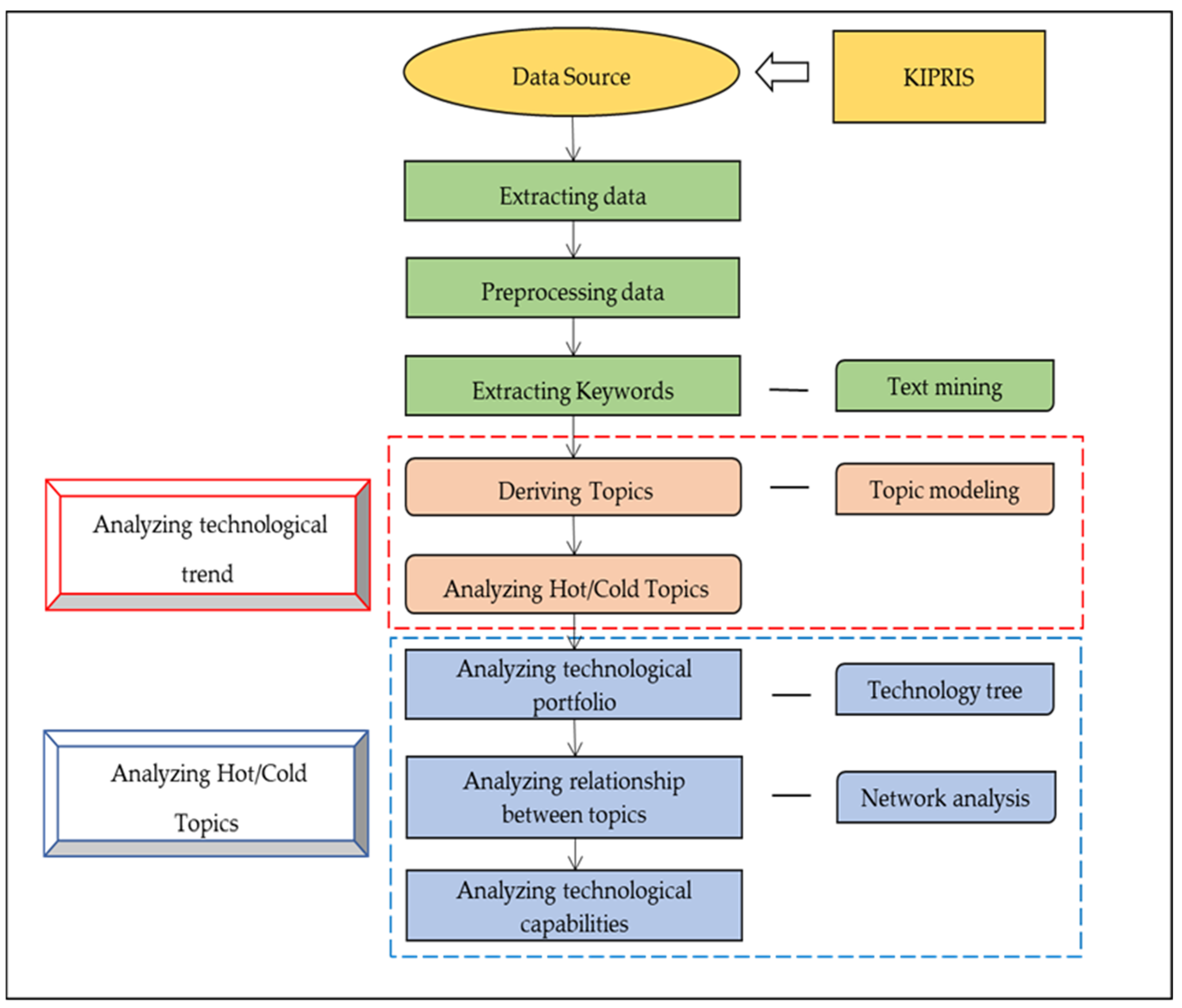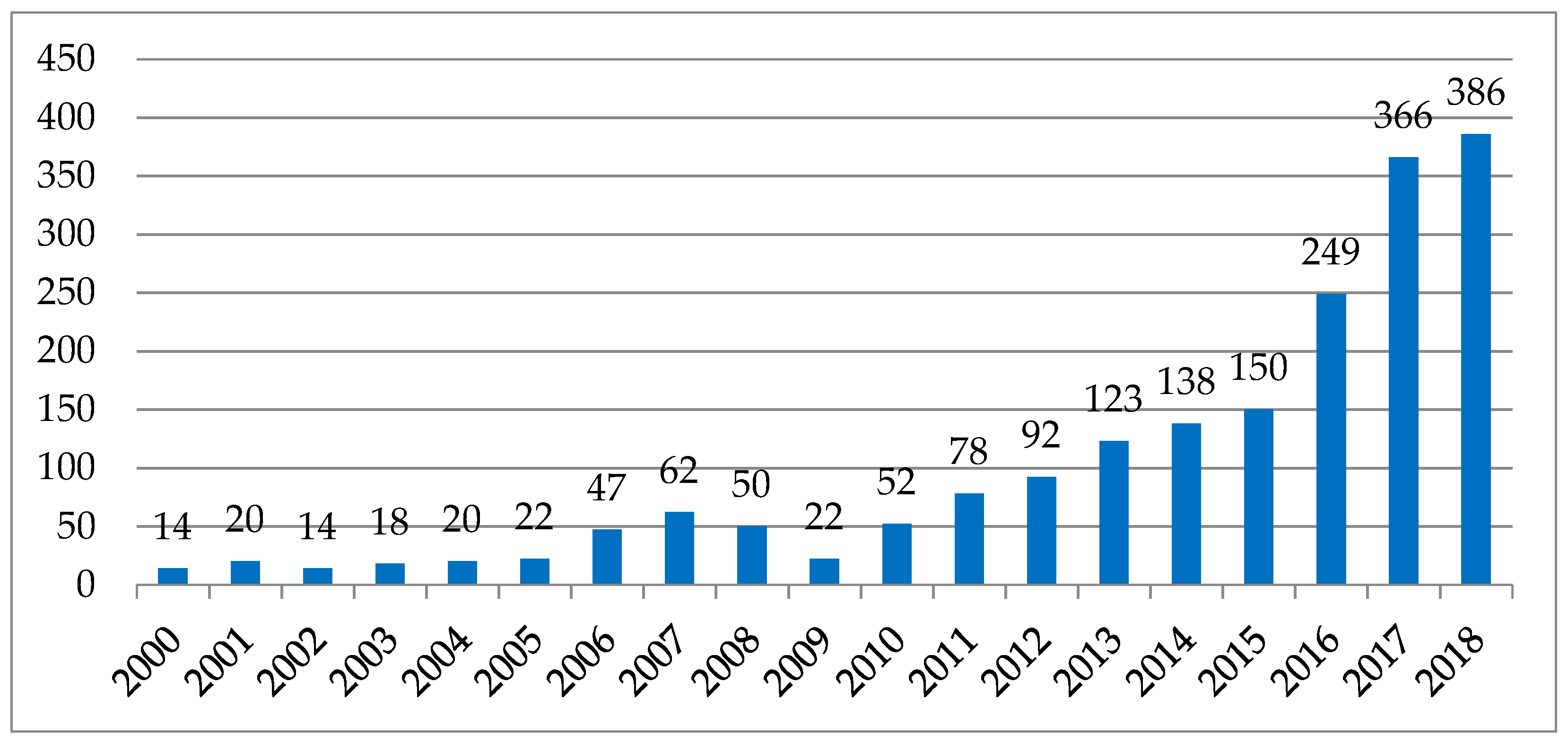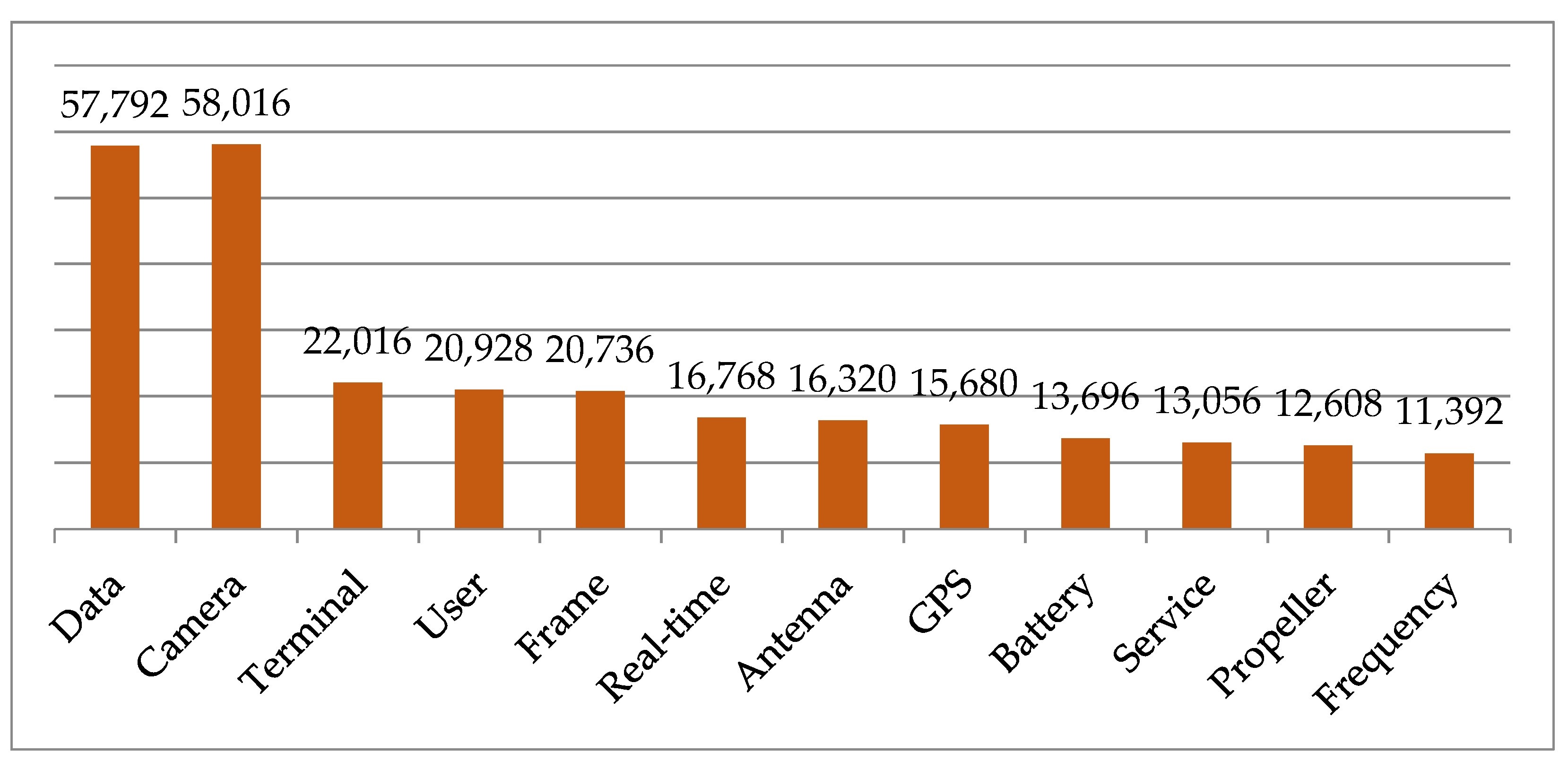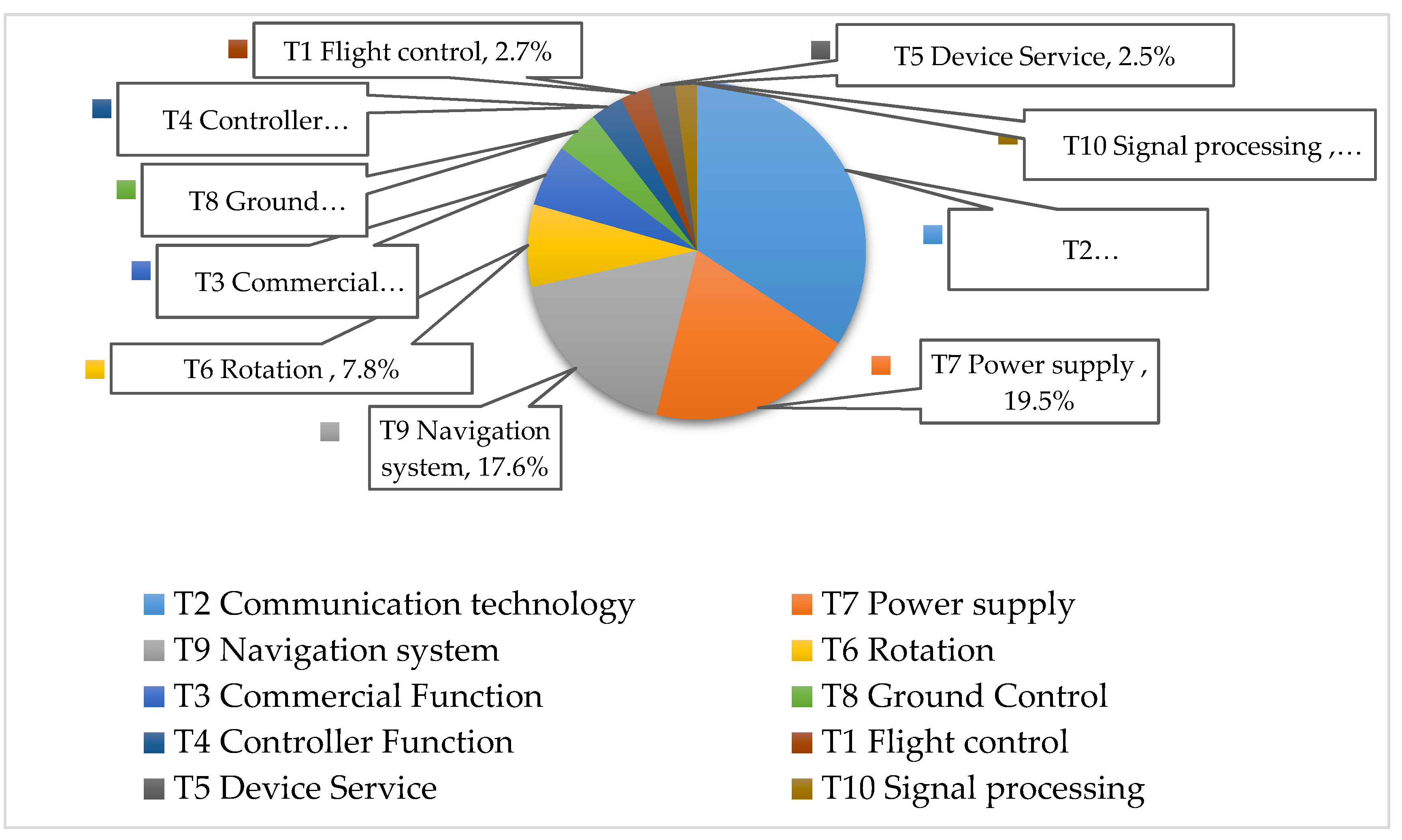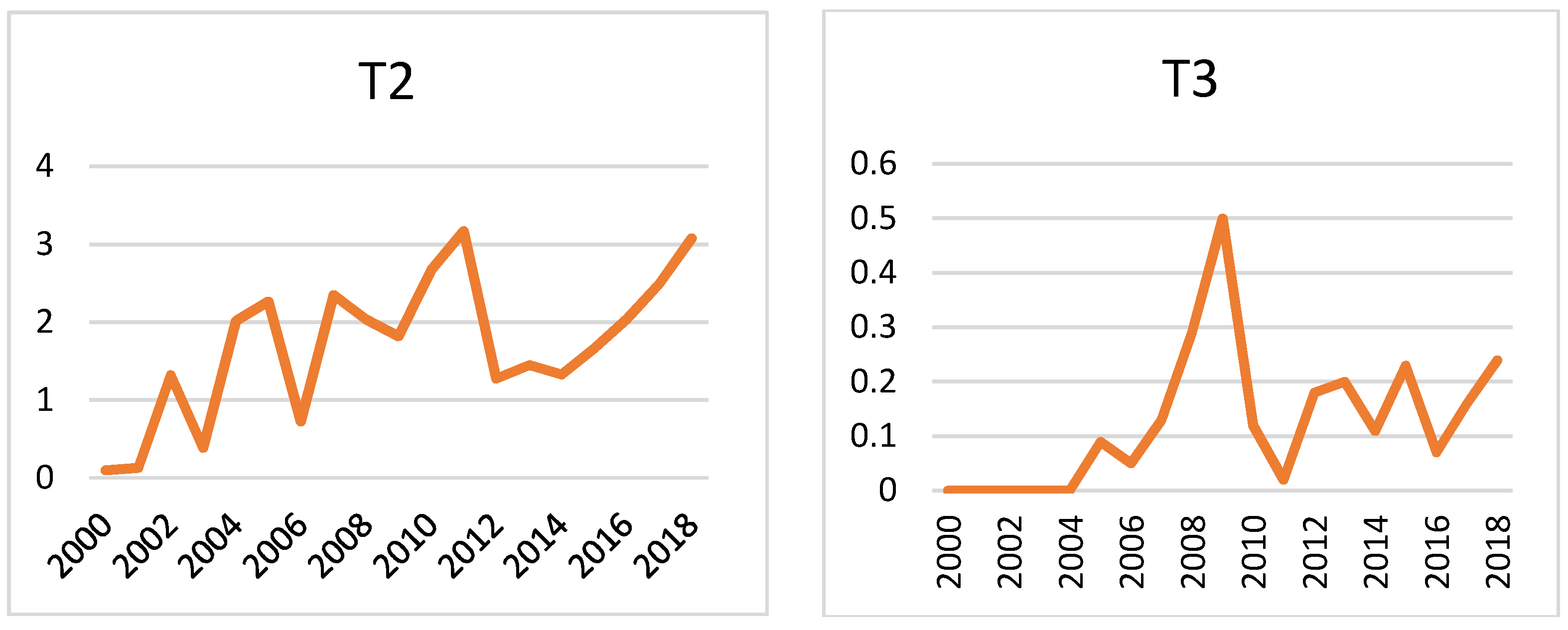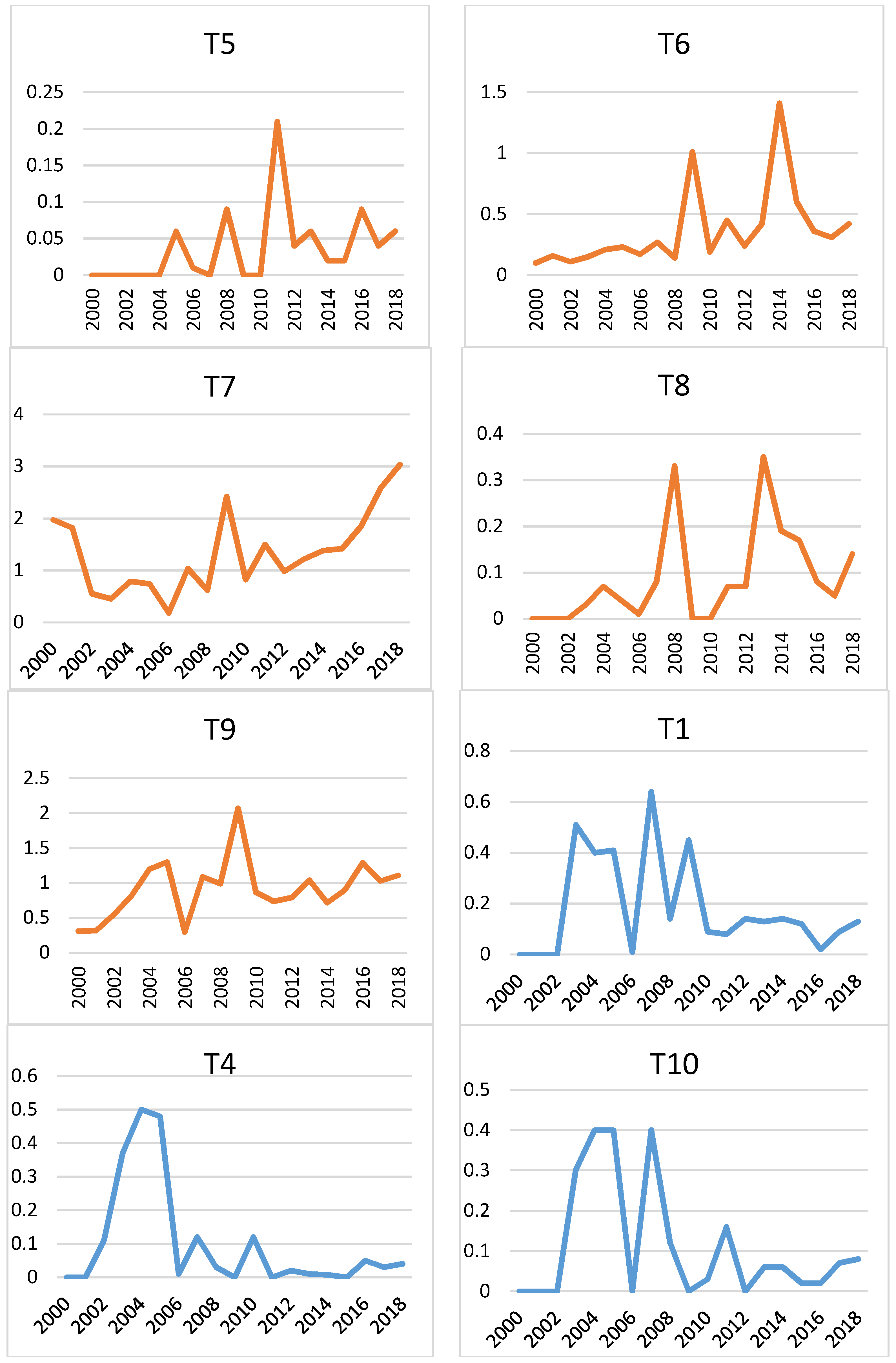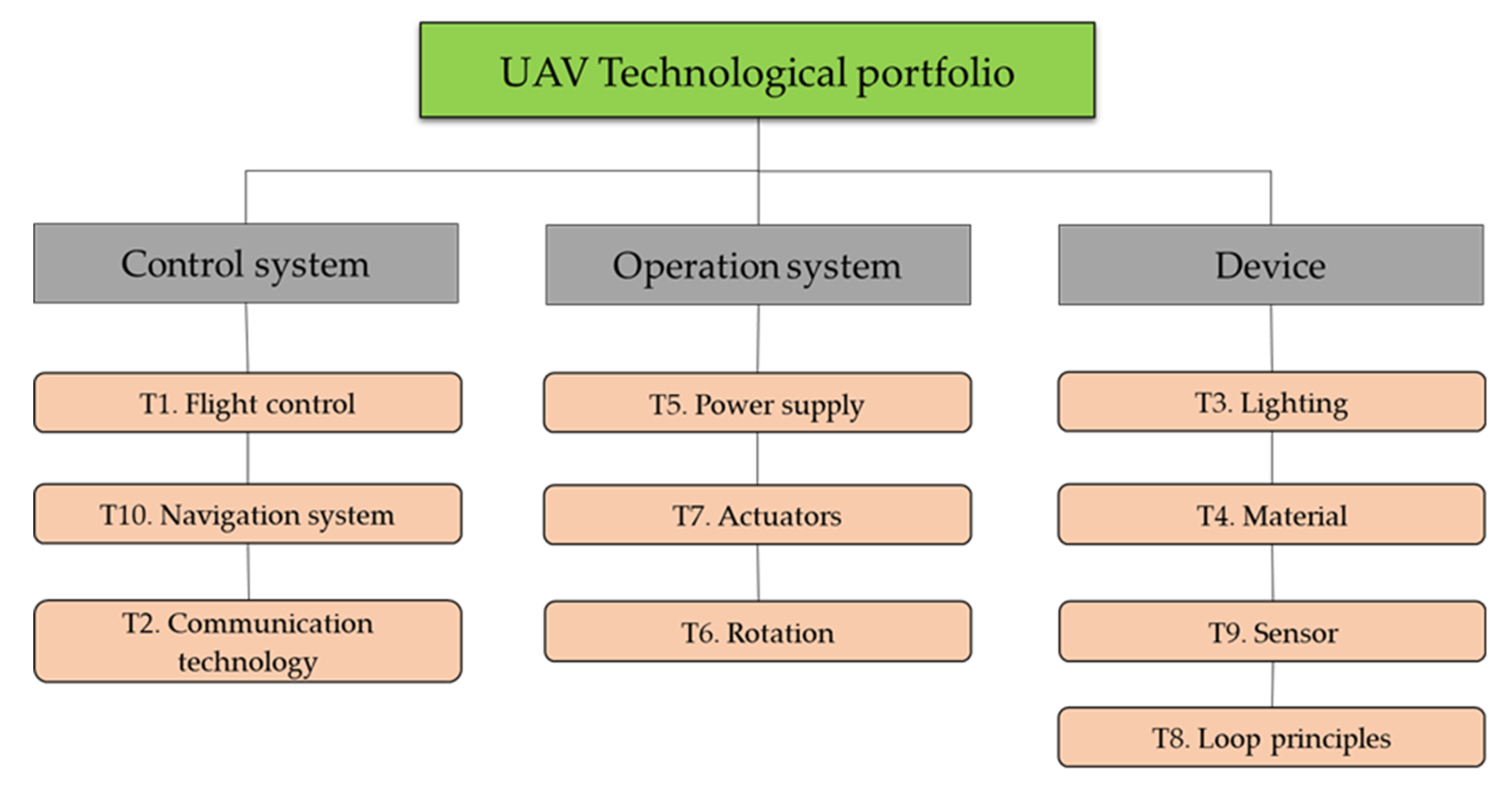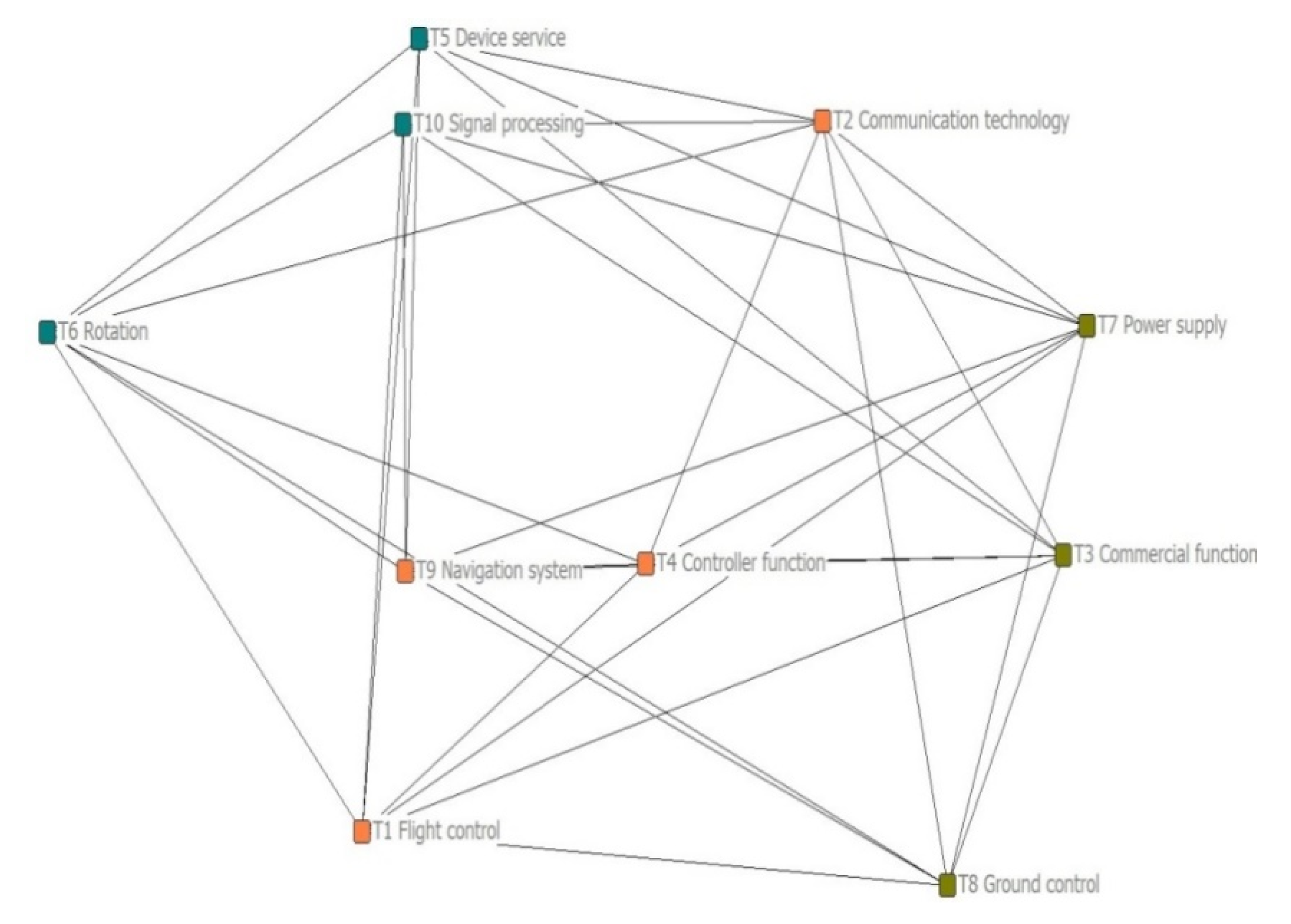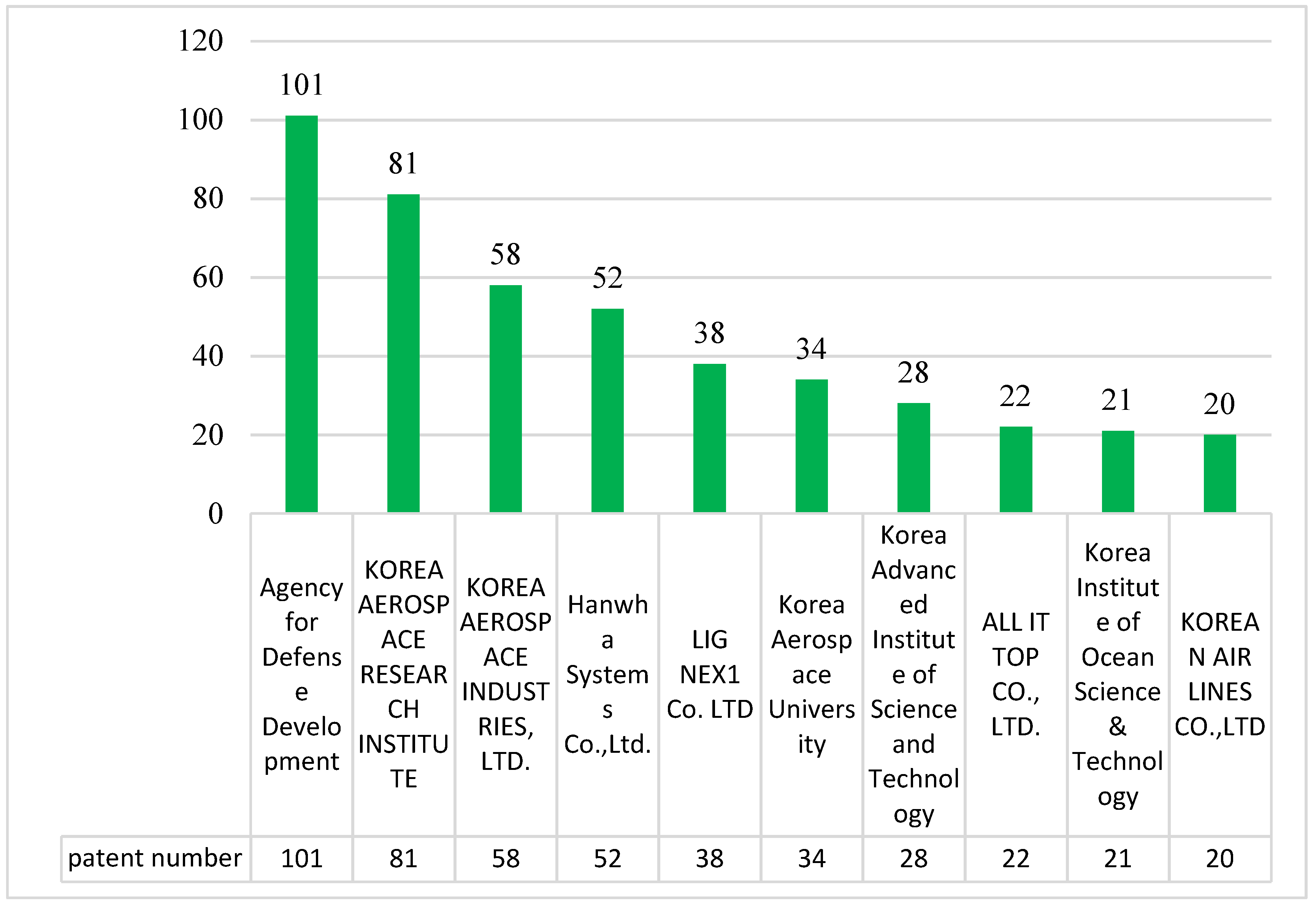1. Introduction
In the present era, unmanned aerial vehicles (UAVs) also known as “drones” are supposed to be among multivariate and cutting-edge technologies. They are still in the beginning stage in terms of huge adoption and usage; however, drones have previously broken through rigid traditional barriers in industries that otherwise seemed unpassable by comparable technological innovations. In recent years, drones have taken center stage to the functions of various governmental organizations and businesses. They have managed to pass through areas where some industries were either lagging behind or stagnant. From the rapid delivery of rush hour to the unattainable military base scan, drones are proving extremely beneficial in places where people cannot reach or perform in an efficient and timely manner. Drones are some of the key use cases offered by industries around the world, including improved efficiency and productivity, reduced workload and production costs, improved accuracy, improved service, improved customer relationships and resolution of security issues. As more and more companies are beginning to realize the global reach and possibilities, the adoption of industry-wide drone technology has taken off quickly from the fad stage to the mega trend stage. Whether drones are controlled by a remote controller or via a smartphone app, they have the ability to reach the furthest areas with little manpower needed and require minimal energy, time and effort. This is one of the biggest reasons being adopted worldwide, especially by these four sectors: personal, commercial, military and future technology. Gupta et al. (2016) [
1] defined UAVs as an emerging technology that can be harnessed for military, public and civil applications. Military use of UAVs is more than 25 years old, primarily consisting of border surveillance, reconnaissance and strike [
1]. Public use is by public agencies such as public safety, police and transportation management [
1,
2]. In the global aerospace industry, UAVs have become an essential means of securing growth and competitiveness. The investment in UAVs is estimated at billions of dollars in developed countries.
There is a lack of research that derives key technologies or issues and analyzes technological trends in the UAV industry. Previous studies have relied heavily on experts, literature surveys, expert advice and Delphi techniques. The problem is that such a qualitative method of simply collecting and processing an expert’s opinion takes a lot of time, manpower and money to derive the analysis results from a large amount of data. Besides, there is a limit to the analysis result because of experts’ subjective opinions. Consequently, to compensate these limitations of this normal method of research, there have been several attempts to analyze the technological trend in quantitative ways, such as text mining or big data analysis. However technological trends are necessary to present research directions to the researchers in the aerospace industry for developing policies and management strategies.
Hence, in this paper, we propose to analyze the technological trend and technological portfolio of a UAV based on patent data using topic modeling and network analysis. Topic modeling provides a way to understand and summarize large amounts of text information. It finds hidden subject patterns that exist throughout the collection, annotates documents according to these topics and uses these annotations to help organize, search and summarize text.
The rest of the paper is organized as follows:
Section 2 discusses the literature review,
Section 3 explains the research framework,
Section 4 reports the results and finally,
Section 5 presents the conclusion.
2. Literature Review
2.1. Methodology
2.1.1. Topic Modeling
Generally, topic modeling can be divided into two different parts. The first area of topic modeling describes the methods. The main methods of topic modeling are latent Dirichlet allocation (LDA), latent semantic analysis (LSA), correlated topic modeling (CTM) and probabilistic latent semantic analysis (PLSA). The second part of topic modeling has a topic evaluation model. Topic evaluation models consider the main important factor in the evaluation. The main important factor is time. The main models are dynamic topic models (DTM), topic over time (TOT), dynamic topic correlation detection, multiscale topic tomography and detecting topic evaluation. David (2012) [
3] introduced latent Dirichlet allocation (LDA) which is a probabilistic model by using the variation methods and the expectation-maximization (EM) algorithm. David et al. (2003) [
4] searched for a suitable algorithm for managing large document archives and concluded that the topic modeling algorithm is suitable because of its advantages, in that it can be applied to a vast collection of documents. David (2012) [
3] analyzed topic modeling under two different categories such as methods of topic modeling and a topic evaluation model. Rubayyi and Khalid (2015) [
5] and Hui et al. (2019) [
6] utilized topic modeling for analyzing scientific research articles in the manufacturing and engineering fields. Using topic modeling for getting the trend of technological research topics is the present, and will be the future state, of these research areas. Abuhay (2018) [
7] proposed a hot topic life cycle model (HTLCM) to find out the evaluation trend of a topic and Du et al. (2020) [
8] proposed an algorithm by integrating HTLCM with a micro-blog features latent Dirichlet allocation (MF-LDA) model. The technology affects the system level tradeoffs that shape the overall system design (Paul and Thomas, 2012) [
9].
2.1.2. Latent Dirichlet Allocation (LDA)
David (2012) [
3] described topic modeling as the automatic retrieval of topics from a collection of documents. The documents themselves are observed, while the topic structure—topics, per-document topic distributions and per-document, per-word topic assignments—is a hidden structure. The observed documents to infer the hidden topic structure are used for the central computational problem of topic modeling [
4]. LDA is a generative probabilistic model of a corpus. The basic idea is that documents are expressed as random mixtures over latent topics, where each topic is characterized by a distribution over keywords.
The LDA model is expressed as a probabilistic graphical model. There are three levels to the LDA expression. The parameters and . are corpus level parameters that are assumed to be sampled once in the process of generating a corpus. The variables . are document-level variables, sampled once per document. Finally, the variables . and are word-level variables and are sampled once for each word in each document. The Dirichlet is a convenient distribution on the simplex—it is in the exponential family that has finite-dimensional sufficient statistics, and is conjugate to the multinomial distribution.
There are various applications based on the LDA method such as Rubayyi and Khalid (2015) [
5] and Ho et al. (2020) [
10]:
Role discovery: social network analysis (SNA) is the study of mathematical models for interactions among people, organizations and groups;
Emotion topic: the pairwise-link-LDA model, which is focused on the problem of the joint modeling of text and citations in the topic modeling area [
5];
Automatic essay grading: the automatic essay grading problem is closely related to automatic text categorization, which has been researched since the 1960s;
Anti-phishing: phishing emails are ways to theater sensitive information such as account information, credit card and social security numbers;
Example of LDA: this section is to provide an illustrative example of the use of an LDA model on real data.
2.1.3. Network Analysis
Network analysis is a method to quantitatively analyze the structure of networks created by interactions and relationships between nodes and is used in various fields such as business administration, social science and applied science Kim et al. (2017) [
11]. Network analysis can visualize and express the interrelationships between nodes and can identify structural characteristics of the entire network by using quantitative indicators. Through network centrality analysis, it is possible to grasp the relationship between nodes and measure the characteristics (location, influence, etc.) of nodes in the network as a centrality index. These centrality indicators can be used to identify the relationships between nodes located in the network. The four types of centrality indicators are degree centrality, closeness centrality, between centrality and eigenvector centrality. The network consists of a number of “communities” that are internally connected. The way to divide the network into communities is the walk trap community. The closed road community discovers the community through a series of random walks, treating each node as a community and clustering them, gradually merging them into larger groups.
2.2. Unmanned Aerial Vehicle (UAV)
There are several performance features of UAVs, which are routing, seamless handover and energy efficiency of the UAV in the communication network (Gupta et al., 2016) [
1]. UAV-based traffic analysis will become a useful resource for future researchers [
12,
13]. Kim and Kim (2012) [
14], using patent citation for patent network analysis, proposed to portfolio matrices to manage technological convergence. Kim et al. (2015) [
15] proposed a technology-centered approach to identify and manage opportunities for technology-based services using business model (BM) patents.
Suh and Jeon (2018) [
16] quantitatively investigated the patterns of open innovation using the patent-based brokerage analysis on mobile communication technology. Jeon et al. (2019) [
17] proposed a new method for identifying the core robot technologies based on technological cross-impact. Jeon et al. (2011) [
18] proposed a systematic approval to explore potential technology partners using patent information. Lee et al. (2020) [
19] suggested an approach for identifying a technological development strategy using patent analysis.
3. Research Framework
The process of analyzing the technological trend and technological portfolio of a UAV is as follows. First, we collected the patents from the data source. Second, we extracted the data, and third, we preprocessed the data for text mining. Next, we extracted the keywords and derived topics using topic modeling. Finally, we analyzed the technological trend and technological portfolio.
Figure 1 shows the flow of the overall process in this study. The details of each process are described below.
Extracting Data and Preprocessing
In this study, a total of 1837 UAV patents were collected from the Korea Intellectual Property Rights Information Service. All patents have been registered from 2000 to 2018 over eighteen years. KIPRIS is an internet-based patent database aimed at promoting the use of patent information on research and development activities, patent disputes, etc. Patent documents in the selected field are collected in the KIPRIS database according to the relevant search conditions. As the collected patent documents are unstructured data expressed simply in text format, they need to be pre-processed. Thus, parsing is performed according to the structure of the document so that unnecessary information is removed. We retrieved the abstracts from each patent in conjunction with the title of the invention, registration date and applicant or inventor, etc.
Figure 2 shows the total number of patents registered in each journal per year, and the number of articles has been increased dramatically between 2000 and 2018, especially after 2015 [
6].
4. Results and Analysis
4.1. Extracting Keywords
We used the Korean text-mapping package (KoNLP) for the R program. We removed stop words and symbols that are unnecessary for analysis and then extracted nouns with a string of at least two characters to a maximum of seven characters as keywords.
Figure 3 shows the word frequency of the extracted keywords. The most frequent 12 words are “Data” with 57,792 times, “Antenna” with 16,320 times and “GPS” with 15,680 times, etc.
4.2. Deriving Topics
In order to extract the UAV detailed technology, topic modeling through the LDA algorithm was performed on the preprocessed patent abstract information. For this purpose, R package “Topicmodels” is used and the Gibbs sampling method is used for the parameter estimation of the LDA model [
4]. When looking for a topic using topic modeling, the number of topics must be given in advance. Large estimates and differences in complex and large datasets can lead to a lack of objectivity in the model due to problems such as overfitting. The number of appropriate research areas and the number of sampling iterations can be determined at the level at which the researcher can best interpret the results. We extracted 10 topic numbers and the number of sampling repetitions was set at 3000. We extracted the words with high probability in the nine research fields and the research fields, and
Table 1 shows a keyword in the extracted research field and the research field. Topics consist of [T1] flight control, [T2] communication technology, [T3] controller function, [T5] device service, [T6] rotation, [T7] power supply, [T8] ground control, [T9] navigation system and [T10] signal processing. Keywords in the research field are outputted by increasing the number of words in the research field when performing topic modeling. The words in the printed research field were derived by deleting the words except those highly related to the research field. The results of this analysis are shown in
Figure 4 which shows that the most popular topics are [T2] communication technology, [T7] power supply and [T9] navigation system. This percentage analysis is calculated by LDA. LDA can calculate the percentage of each topic and we can easily get the result by some function in the R program. More information can be obtained from Blei et al. (2003) [
4]. Overall, communication technology and power supplies are relatively high in UAV technology, while energy source and motor technology are relatively low.
4.3. Analyzing Hot/Cold Topics
Yearly trends of topics in the last 18 years are classified into hot topics and cold topics. The regression coefficients of the linear regression analysis were used as a criterion to judge the yearly trend of each topic as rising and falling. Time series linear regression analysis was performed using the year as an independent variable and yearly weighted average value of UAV technology as a dependent variable to identify trends by year for each topic. The hot/cold topics of the UAV are shown in
Figure 5 which shows that the hot topics are [T2] communication technology, [T3] commercial function, [T5] device service, [T6] rotation, [T7] power supply, [T8] ground control and [T9] navigation system, and cold topics are [T1] flight control, [T4] controller function and [T10] signal processing.
4.4. Analyzing the Technological Portfolio
To see which topics are related to UAV technology, each topic is divided into three UAV fields as shown in
Figure 6. First, [T1] flight control, [T2] communication technology and [T9] navigation system are related to the “Control system”. Second, [T3] commercial function, [T6] rotation and [T7] power supply belong to the “Operation system”. Finally, [T4] controller function, [T5] device service, [T8] ground control and [T10] signal processing are included in “Device”.
4.5. Analyzing Relationship between Topics
A co-expression word matrix of 10 topics derived from topic modeling was generated, and network visualization was performed using the walktrap.community function “igraph” of the R package. Each topic is defined as a node, the size of the node label is a connection centrality and the relationship between the topics is defined as an edge. As a result of the network analysis, in
Figure 7, we can see that [T1] flight control, [T2] communication technology, [T4] controller function and [T9] navigation system show high connection centrality. These technologies can be said to be the core areas of UAV technology and are the control system.
4.6. Analyzing the Technological Capabilities
To stay ahead of the fierce market competition, companies are striving for quick patent registration. Therefore, it is effective to analyze the patented technology owned by each company in understanding the technology trends and strategies of the companies. UAV patents held by Korean aerospace companies are shown in
Figure 8, with Agency for Defense Development at number one, followed by Korea Aerospace Research Institute. Third is Korea Aerospace Industries, LTD., and this is a private defense company that has developed the Republic of Korea’s T-50 Advanced Trainer and Korean Mobile Helicopter Surion. As of 2019, it is Korea’s largest defense company, also known as “Kai” or “Korean Airways”. The analysis of UAV-related technology by the company was conducted in two aspects. One examined the technology weighted by each company through the topic of weight analysis by the company. The other was to examine the number of patents held by each topic to identify companies with superior technical skills.
Based on the weight of topics, the key technologies covered by companies are analyzed as shown in
Table 2. The strengths of each company are shown in
Table 3. The strengths of the technology were analyzed by the top three technologies of the selected topics.
Agency for Defense Development showed strength in [T1] flight control, [T2] communication technology topics in the control system and [T6] rotation topics in the operation system. The Agency for Defense Development is a special corporation established under the Agency for Defense Development Act to contribute to the strengthening of national defense capabilities and the realization of independent national defense, and other public organizations under the Ministry of National Defense. It is responsible for the development, analysis, research and development of advanced weapons systems and scientific defense technology. The Korea Aerospace Research Institute shows strength in the field of [T1] flight control in the control system, [T6] rotation in the operation system and [T10] signal processing topics in the device. The Korea Aerospace Research Institute is a foundation for other public organizations related to aerospace, science and technology under the Ministry of Science, Technology, Information, and Communication. Korea Aerospace Industries, LTD., or KAI, is heavily involved in the [T2] communication technology topic in the control system, [T6] rotation topic in the operation system and [T10] signal processing topic in the device. KAI has established a mid-to-long-term vision strategy to grow into an aerospace total solution company in 2020 by redefining its business into four business groups: fixed-wing, rotorcraft, civil service, and aircraft follow-up support. Hanwha Systems Co., Ltd. showed strength in the [T2] communication technology topic in the control system, [T6] rotation topic in the operation system and [T10] signal processing topic in the device. Using state-of-the-art aerospace technology, Hanwha has developed Korea’s first synthetic aperture radar (SAR) for military reconnaissance satellites and an active electronically scanned array (AESA) radar for next-generation fighter KF-X. Hanwha also developed key avionics electronic devices for fixed, rotating and unmanned systems. LIG NEX1 Co. shows strength in the field of [T1] flight control in the control system, [T6] rotation in the operation system and [T10] signal processing topics in the device. It is active in various fields including precision strike weapons systems, surveillance and surveillance weapons system, command and communications weapons system, electronic warfare systems and aviation warfare. Korea Aerospace University shows strength in the field of [T1] flight control, [T2] communication technology topics in the control system and [T6] rotation topic in the operation system. Major research results by the Korea Aerospace University have been observed in the field of unmanned aerial vehicles (UAVs), since the first autonomous formation flight of a UAV and the first flight of a solar-powered UAV for 12 consecutive hours in Korea. KAIST (Korea Advanced Institute of Science and Technology) is heavily involved in [T1] flight control in the control system, [T6] rotation in the operation system and [T9] ground control in the device. ALL IT TOP CO., LTD. showed strength in [T9] navigation system in the control system, [T6] rotation in the operation system and [T10] signal processing topics in the device. In the case of Korean Institute of Ocean Science and Technology, [T1] flight control in the control system, [T6] rotation in the operation system and [T8] ground control in the device are large. Korean Air Lines CO., LTD is famous for [T1] flight control, [T9] navigation system topics for the control system and [T10] signal processing topics in the device. Korean Air has also been involved in aerospace research and manufacturing. The division, known as the Korean Air Aerospace Division (KAL-ASD), has manufactured licensed versions of the MD Helicopters MD 500 and Sikorsky UH-60 Black Hawk helicopters, as well as the Northrop F-5E/F Tiger II fighter aircraft. Korean Aerospace Industries (KAI) manufactured the aft fuselage and wings for the KF-16 fighter aircraft and parts for various commercial aircraft including the Boeing 737, Boeing 747, Boeing 777 and Boeing 787 Dreamliner; and the Airbus A330 and Airbus A380. KAI also provides aircraft maintenance assistance for the United States Department of Defense in Asia and maintains a research division with focuses on launch vehicles, satellites, commercial aircraft, military aircraft, helicopters and simulation systems.
5. Conclusions
In this study, we analyzed the technological trend and technological portfolio of unmanned aerial vehicles based on patent data. We collected a total of 1837 UAV patents from the Korea Intellectual Property Rights Information Service and patents are registered from 2000 to 2018 over eighteen years. As a result of examining the patent changes by year in terms of UAV, we confirmed the continuous growth and rapid increase in related technologies. As a result of LDA topic modeling, 10 technical topics were derived, the topic names were assigned and the technical fields were defined. Further, yearly trends of topics in the last 18 years are classified into hot topics and cold topics. To see which topics are related to UAV technology, we divided each topic into three UAV fields.
As a result of the network analysis, a co-expression word matrix of 10 topics derived from topic modeling was generated, and network visualization was performed using the walktrap.community function “igraph” of the R package. Each topic is defined as a node, the size of the node label is a connection centrality and the relationship between the topics is defined as an edge. To stay ahead of the fierce market competition, companies are striving for quick patent registration. Therefore, it is effective to analyze the patented technology owned by each company in understanding the technology trends and strategies of the companies. The analysis of UAV-related technology by the company was conducted in two aspects. One examined the technology weighted by each company through the topic of weight analysis by the company. The other was to examine the number of patents held by each topic to identify companies with superior technical skills.
According to analyzing the results of the technological trends and portfolio, various channels of open innovation in UAV can be found [
20]. For example, some technologies such as ground control are mainly acquired by universities. However, other technologies such as flight control, communication technology in the control system and rotation are mainly acquired by university–industry collaboration. The other technologies such as signal processing can be obtained from research institutes or cooperation. According to network analysis, some technologies such as flight control, communication technology, controller function and navigation system have high connection. Therefore, more open innovation dynamics [
21] are necessary, especially when developing these technologies. According to analyzing the results of the technological capabilities, we can search and select open innovation partners for research collaboration [
22]. For example, LIG NEX1 Co. LTD has high technological strength in flight control, therefore LIG NEX1 Co. LTD can be open innovation partners who need flight control technology.
The significance of this study is as follows. First, in the past, research on the quantitative and systematic derivation of technology trends in the UAV sector using text data was insufficient. This study is the first attempt to introduce this method into the UAV field. Second, it analyzed the patents data using increasing and decreasing texts. Patent and dissertation data have the advantage of “timeliness” in that the main concern of the field is instantly textualized. Third, it is confirmed that emerging technology can be derived when the technology trends are analyzed in a time series. It is possible to derive hot topic and cold topic results that are closer to fact than patent or thesis data.
The results obtained quantitatively through the analysis process proposed in this study can be used as an intuitive reference index by visualizing the experts in UAV technology development trends. Unlike the existing simple aerospace trend analysis, this study performed the analysis by the text mining technique using the abstract of patent data in the UAV field, and it is the traditional quantification that is generally used for patent analysis. This is of great significance in terms of topic modeling and network analysis, not bibliographic methodologies. It is expected that the UAV technology trends identified through this study can be effectively used for policy development and technology strategies of the aerospace field.
The limitations of this study and future research direction are, firstly, the analysis was limited to the South Korean aerospace companies. Therefore, it is necessary to further analyze global data sources reflecting on the latest technology and more major countries. Secondly, although we looked at the change in the proportion of topics in a short period, it was difficult to interpret them as trends in all UAV technology. Future studies will need to add data accumulated over 20 years. Thirdly, it may be possible to explore the difference between the technology trends derived from news articles, papers and reports, and to analyze the various media materials that can identify the trends of the technology. Finally, the reliability of the analysis results can be improved because it is based on the objective and quantitative analysis results compared with the analysis performed only by the patent data.
